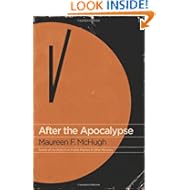I’ve published a post on engineering.talis.com entitled Puppet development workflow with Git.
Logging client side errors server-side in AngularJS
I’ve just published a new post on engineering.talis.com entitled Logging client side errors server-side in AngularJS
Development workflow automation with Gruntjs
I’ve just written a new blog post over on the engineering.talis.com blog entitled Development workflow automation with Gruntjs
Copy files from one S3 bucket to another
I have an S3 bucket that contains several hundred files in a folder. I needed to copy those files into a different folder in another bucket. Sounds simple enough? but was unable to find a simple way to do this through the AWS Console. I found a number of stack overflow articles that talked about using Sync, or downloading the files and re-uploading them. None of which sounded particularly appealing.
In the end I just wrote this bash one liner (which I can probably optimise further by not repeating the sourcebucket / sourcefolder three times):
This just uses s3cmd to list all the files in the bucket/folder I wish to copy from. The output of that is piped to awk which I use to extract the s3 url of each file. I then use tail to remove the first line which I don’t need. I then use sed to build up a ‘s3cmd cp’ command which copies the file from its original location to my new location.
If anyone can suggest a better way that doesnt require me having to download the source files … I’d love to hear it.
If you can’t see the embedded Gist above then you can view it here.
Daniel Suarez on why the kill decision should not belong to a robot
Daniel Suarez talk is one I think everyone should watch. The more I consider his words the more I’m convinced that he is right in calling for international ban on the development and deployment of autonomous killer robots. He makes many good points during the talk but here are the ones that really made me stop and think:
because as we migrate lethal decision-making from humans to software, we risk not only taking the humanity out of war, but also changing our social landscape entirely, far from the battlefield. That’s because the way humans resolve conflict shapes our social landscape … Now if responsibility and transparency are two of the cornerstones of representative government, autonomous robotic weapons could undermine both … And this is why we need an international treaty on robotic weapons, and in particular a global ban on the development and deployment of killer robots. Now we already have international treaties on nuclear and biological weapons, and, while imperfect, these have largely worked. But robotic weapons might be every bit as dangerous, because they will almost certainly be used, and they would also be corrosive to our democratic institutions.
Books, books, books …
I’ve been reading a lot over the last few months, and whilst I wish I had the time to write a fuller review of each of the following, I know I just wont have the time. Therefore I’ve written a short review for each of these titles.
On Internet Freedom – Marvin Ammori
Marvin Ammori is a leading campaigner and legal expert on net neutrality and keeping the internet free. This is an excellent book – and it brings together a set of stories that underline why the Internet changes not only how we think about free speech, but how we must seek to protect and promote it. The message is a simple one – that the Internet has come to be the most important engine of free expression in history. Yet it could also be broken due to the missuse of government and corporate power – motivated by fear, greed, and misguided notions of responsibility. This book does succeed in providing some hope that the spirit of activism on the Net is mobilising people to defend their rights.This book was written against the backdrop of SOPA and was therefore very timely.
Mortality – Christopher Hitchens
I’ve always admired Christopher Hitchens, and over the years have read many of his articles and books. He was never one to shy away from making a principled argument. It comes as no surprise that one of the most remarkable polemicists this country has ever produced didn’t leave without having a few important things to say. It is a sobering and often harrowing account of Hitchens final “year of living dyingly” as describes his battle with Cancer in seven essays. The essays begin with Hitchens being diagnosed in June 2010. The openness with which he relates the news is, I think, brave, and his shock is palpable. But I think what I admired the most was rather succumb to rage he instead favours Curiosity. The cancer robbed him of his two main attributes: his voice and the energy to write and its his reflections on these two aspects of his illness that are the most poignant.
Church of Fear : Inside the weird world of Scientology – John Sweeney
There is something fascinating about cults and I’ve read about many over the years in particular learning about the human rights abuses they were guilty of, and often trying to understand how they got away with it. Scientology is one of the worst offenders. I was introduced to it when, at the tender age of 17, someone tried to sell my a copy of Dianetics after asking me to take a “test”, I had time to kill so humoured the individual but I recall after a 20 minute interview I’d learned enough to know it wasn’t something I wanted to be part of. Many people have seen John Sweeney’ documentaries about the Church of Scientology which were disturbing and often difficult to watch. This book lays bare just how terrifying this organisation has become. Sweeney details many examples of people who have either left the church and are critical of it and then extraordinary lengths to which the Church will go to harass and besmirch these individuals. Found myself agreeing with Sweeney when he wrote:
It is as if there is in the United States an eleventh commandment: “Thou shalt not criticize another man’s religion” The danger is that in America they are so afraid of religious un-freedom that they fear to discriminate between a religion and a confidence trick.
Async Javascript: Recipes for Event Driven Code – Trevor Burnham
If you are interested in learning more about asynchronous programming in JavaScript I highly recommend this book. The first chapter alone on “The JavaScript Event Model” is worth the price of the book. Technical books about programming languages often focus on the mechanics of a particular language – how it works. Occasionally a book (or an article or blog post ) comes along that transforms your entire perception of a language. This, for me, is definitely the latter. This book was in no small part the catalyst for my current love affair with NodeJS. In a very clear and concise manner, concepts such as the Pub/Sub model, custom events, Promises/Deferreds and Web Workers are detailed with good clear code examples. I think its only available on the Kindle now, but if you’re starting off with NodeJS, or your battling with async code read this book!
How they started in tough times – David Lester I’ve never read any of the other books in the “How they started” series. However this one was recommended to me by a friend, and it was well worth reading. The book profiles a wide variety of businesses most you will have heard of. Many insights are given into just how these businesses got started and survived in hard economic times. Given the current economic climate, I found the book actually offers hope rather than the typical doom and gloom. The particular companies that are profiled include Wikipedia, Moonpig, Mumsnet, LinkedIn, Walt Disney, Penguin and many more. Pretty inspirational actually.
I’ve never read any of the other books in the “How they started” series. However this one was recommended to me by a friend, and it was well worth reading. The book profiles a wide variety of businesses most you will have heard of. Many insights are given into just how these businesses got started and survived in hard economic times. Given the current economic climate, I found the book actually offers hope rather than the typical doom and gloom. The particular companies that are profiled include Wikipedia, Moonpig, Mumsnet, LinkedIn, Walt Disney, Penguin and many more. Pretty inspirational actually.
After the Apocalypse – Maureen F. McHugh
I love reading science fiction and fantasy, this was a wonderful collection of short stories that are about life after an Apocalypse. Any large enough catastrophe is an apocalypse of sorts, leaving lives altered in its wake, with survivors who still need to live in a changed world. What I really liked about this collection is that those survivors are simply everyday people caught up in events, and the choices they make are as varied as human beings can be. With “near-future” being one of the hot topics in science fiction at the moment After the Apocalypse succeeds where others don’t by depicting ordinary people trying to get on with their ordinary lives as best they can, despite the hopelessness and horror around them.
A Psalm of Life
Tomorrow is the fifth anniversary of my father’s death, it’s hard to believe that its been five years, and yet here we are; so much has happened, so much has changed and yet so much remains the same. I miss him so very much, I miss his wisdom, his humour, his strength but most of all I miss the comfort I felt simply knowing he was there. It was while I was thinking of him that I recalled this poem by Henry Wadsworth Longfellow … which somehow feels apt…
(What the heart of the young man said to the psalmist) Tell me not, in mournful numbers, "Life is but an empty dream!" For the soul is dead that slumbers, And things are not what they seem. Life is real! Life is earnest! And the grave is not its goal; "Dust thou art, to dust returnest," Was not spoken of the soul. Not enjoyment, and not sorrow, Is our destined end or way; But to act, that each tomorrow Finds us farther than today. Art is long, and Time is fleeting, And our hearts, though stout and brave, Still, like muffled drums, are beating Funeral marches to the grave. In the world's broad field of battle, In the bivouac of Life, Be not like dumb, driven cattle! Be a hero in the strife! Trust no Future, howe'er pleasant! Let the dead Past bury its dead! Act, -act in the living Present! Heart within, and God o'erhead! Lives of great men all remind us We can make our lives sublime, And, departing, leave behind us Footprints on the sands of time; Footprints, that perhaps another, Sailing o'er life's solemn main, A forlorn and shipwrecked brother, Seeing, shall take heart again. Let us, then, be up and doing, With a heart for any fate; Still achieving, still pursuing, Learn to labour and to wait.
nodejs + express with jsonp example
I’ve been working more and more with nodejs and have to say I am really loving how easy it’s been to get to grips with. I’ll be posting up more about how I’m using node and the problems I’m using it to solve over the coming weeks. However I wanted to illustrate just how simple it is do something that would be more work in other languages such as PHP.
So here’s a quick example I created that illustrates how to make a simple JSONP call to a nodejs + express server.
Here’s the server side code:
and here’s the client side Html code:
To enable jsonp callback support in an ExpressJS application you just have to include the line:
app.enable(“jsonp callback”);
Once you’ve done this you can use the .json() method on the Response object to handle everything for you. So in my example above any HTTP GET request to /foo?cb=myfunction would return myfunction(“hello world”); with the Content-Type header set to text/javascript.
The Founder’s Dilemma
If entrepreneurship is a battle, most casualties stem from friendly fire or self inflicted wounds
 I’ve really enjoyed reading Noam Wasserman’s ‘The Founders Dilemma: Anticipating and Avoiding the Pitfalls That Can Sink a Startup‘. This is possibly best described as book of research and case studies conducted into starting up a company from the perspective of an entrepreneur. Wasserman focuses on the key dilemmas any founder of a startup will face; these include career dilemmas, dilemmas with co-founders, acquisitions, investor dilemmas, recruitment, exit dilemmas and many others. The book analyses, quantitatively, the early decisions by entrepreneurs that can make or break a startup; what he has done here is conducted real research to get beyond anecdotes and case studies to more general patterns.
I’ve really enjoyed reading Noam Wasserman’s ‘The Founders Dilemma: Anticipating and Avoiding the Pitfalls That Can Sink a Startup‘. This is possibly best described as book of research and case studies conducted into starting up a company from the perspective of an entrepreneur. Wasserman focuses on the key dilemmas any founder of a startup will face; these include career dilemmas, dilemmas with co-founders, acquisitions, investor dilemmas, recruitment, exit dilemmas and many others. The book analyses, quantitatively, the early decisions by entrepreneurs that can make or break a startup; what he has done here is conducted real research to get beyond anecdotes and case studies to more general patterns.
What occurred to me was that many of these dilemmas apply to any situation where a leader might be faced with building a team, finding the right people to embark on a journey together in order to achieve a shared goal. What makes this book such compelling reading are the real world examples that Wasserman cites, and the candor with which he analyses the decisions that were made and describes the real effects and consequences of those decisions.
Hara-Kiri : Death of a Samurai
 Quite excited, learned recently that Takashi Miike‘s, Hara-Kiri: Death of a Samurai, will be available here in the UK fairly soon. Right now all I know is that it’s an adaptation of Masaki Kobayashi‘s 1962 film Harakiri, which is one of my all time favourites.
Quite excited, learned recently that Takashi Miike‘s, Hara-Kiri: Death of a Samurai, will be available here in the UK fairly soon. Right now all I know is that it’s an adaptation of Masaki Kobayashi‘s 1962 film Harakiri, which is one of my all time favourites.
The original film is set in 17th-century Japan, where an era of peace causes the Shogunate to breakup the various warrior clans, throwing thousands of samurai out of work and into poverty. Such a fate is abhorrent to a Samurai, and many prefer ritual suicide (hara kiri) than to live their lives destitute.
The film tells the story of an old warrior, Hanshiro Tsugumo (Tatsuya Nakadai), who arrives seeking admittance to the house of a feudal lord in order to commit ritual suicide.
The reason behind Hanshiro’ arrival is far more complex, as his real motive is to exact revenge against the house. Whilst preparing to commit the act, Hanshiro recounts, in flashback, to the various assembled members of the house, the tragic story of his son-in-law who was forced to sell his real sword to support his sick wife and child. The story comes to a head when it is revealed his son in law was forced to commit ritual suicide with a dull bamboo blade when he came to the same house seeking work.
The original film was brilliant, and I’m really excited to see how Miike has re-imagined the story. There’s a trailer here.

